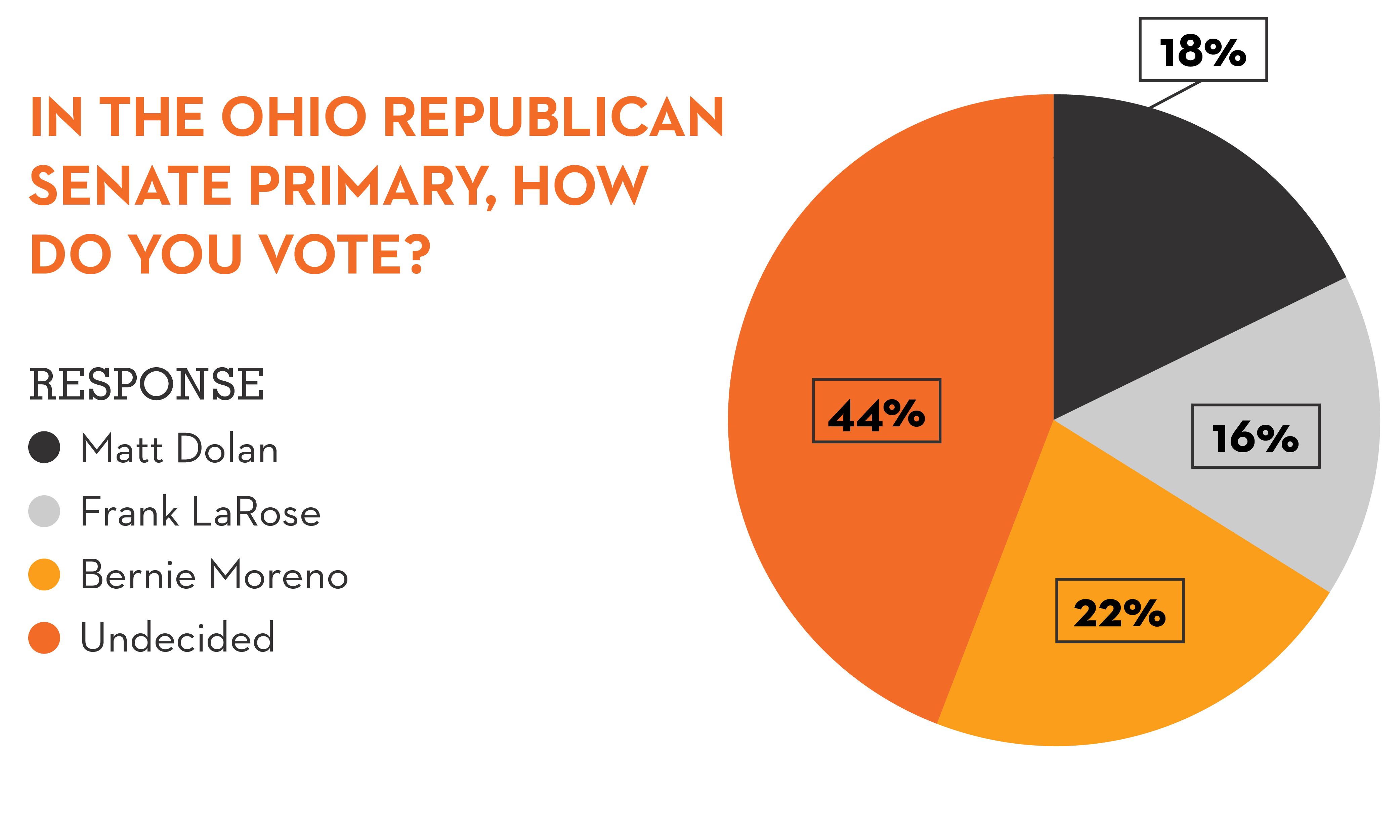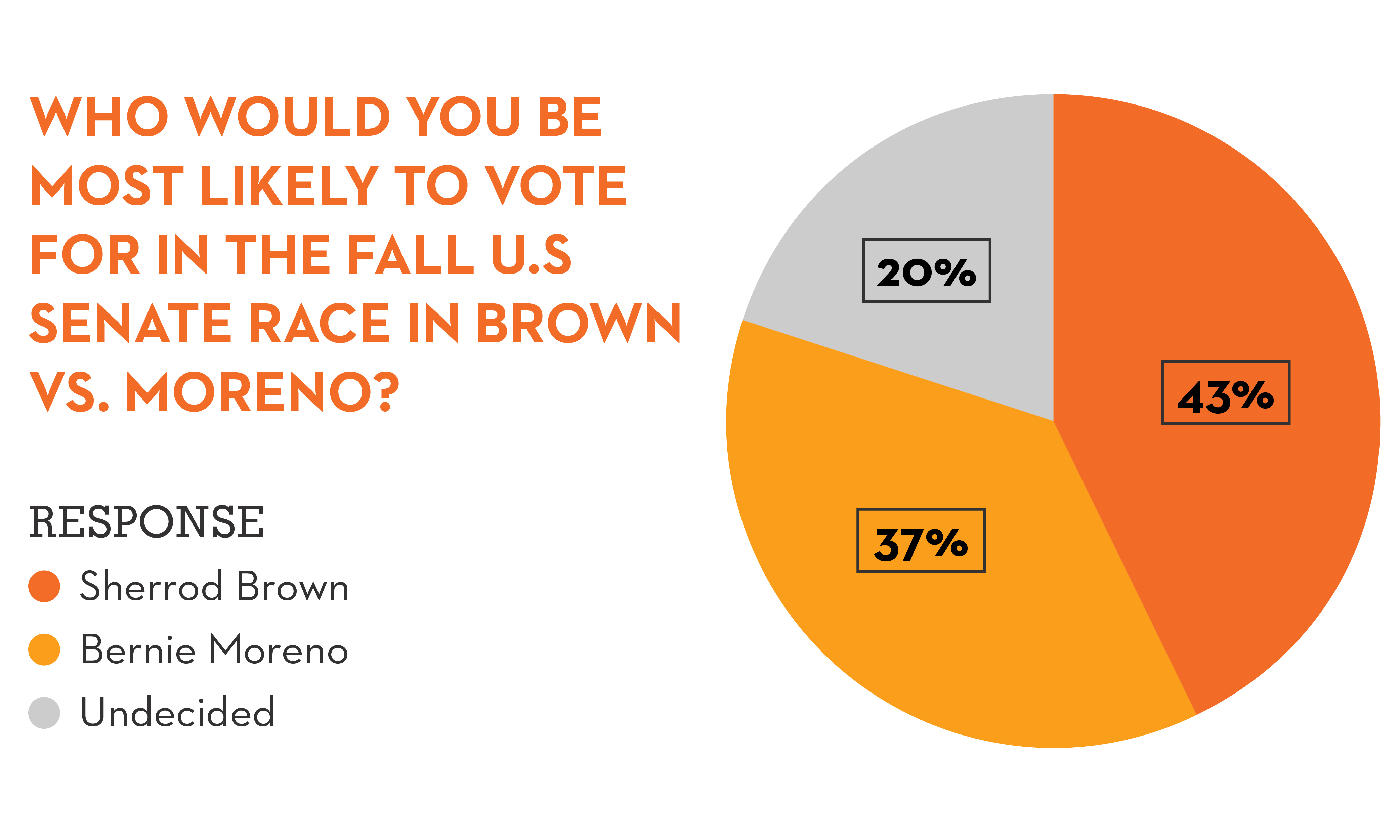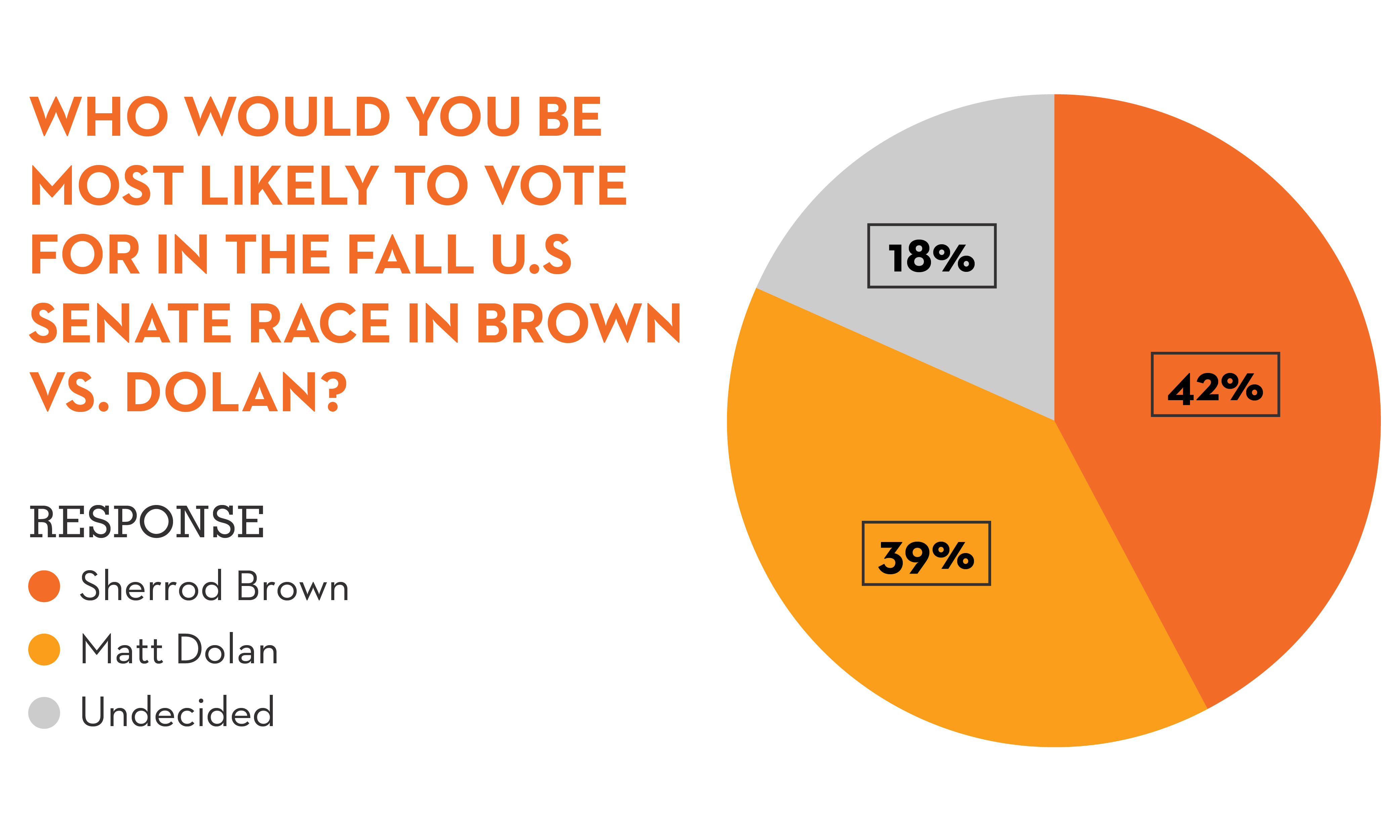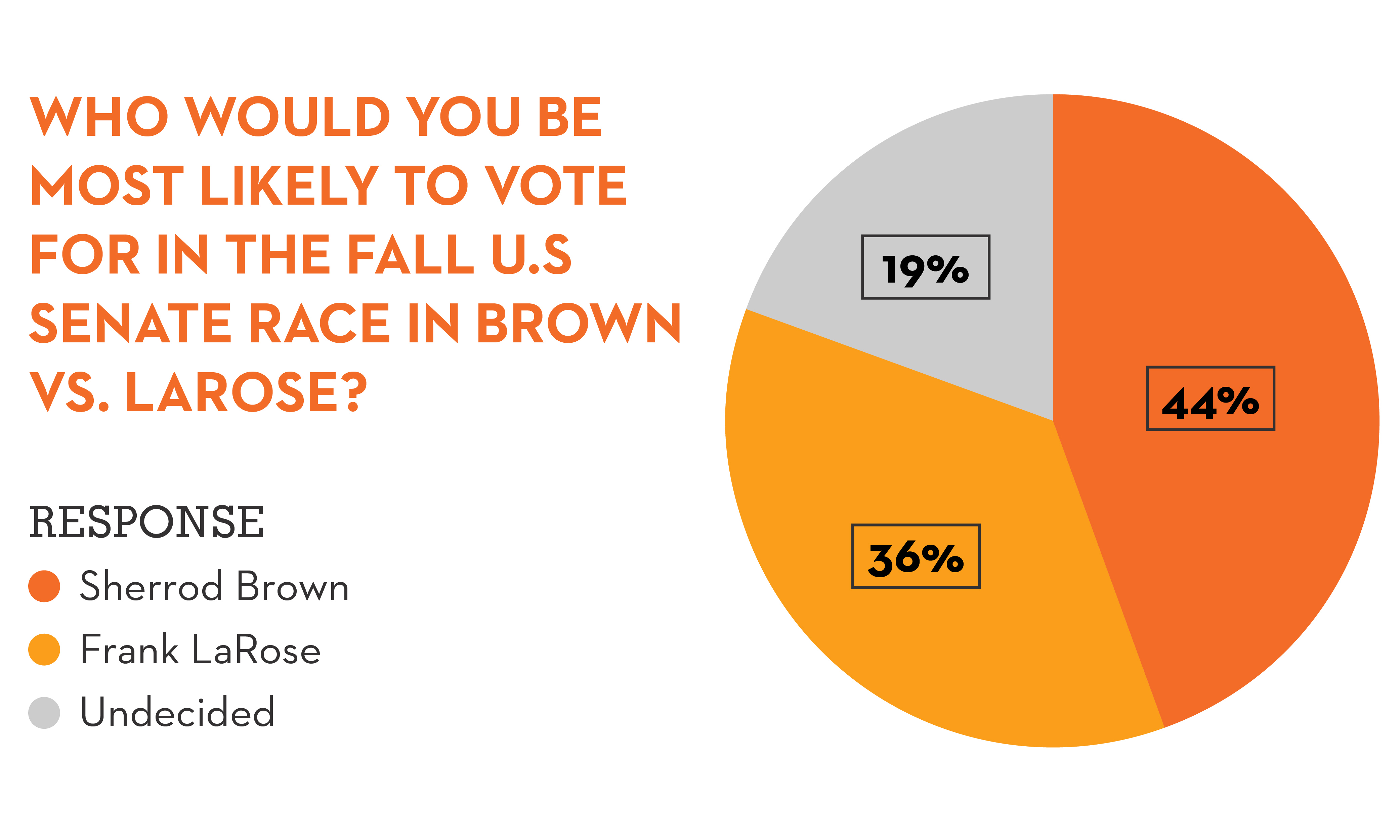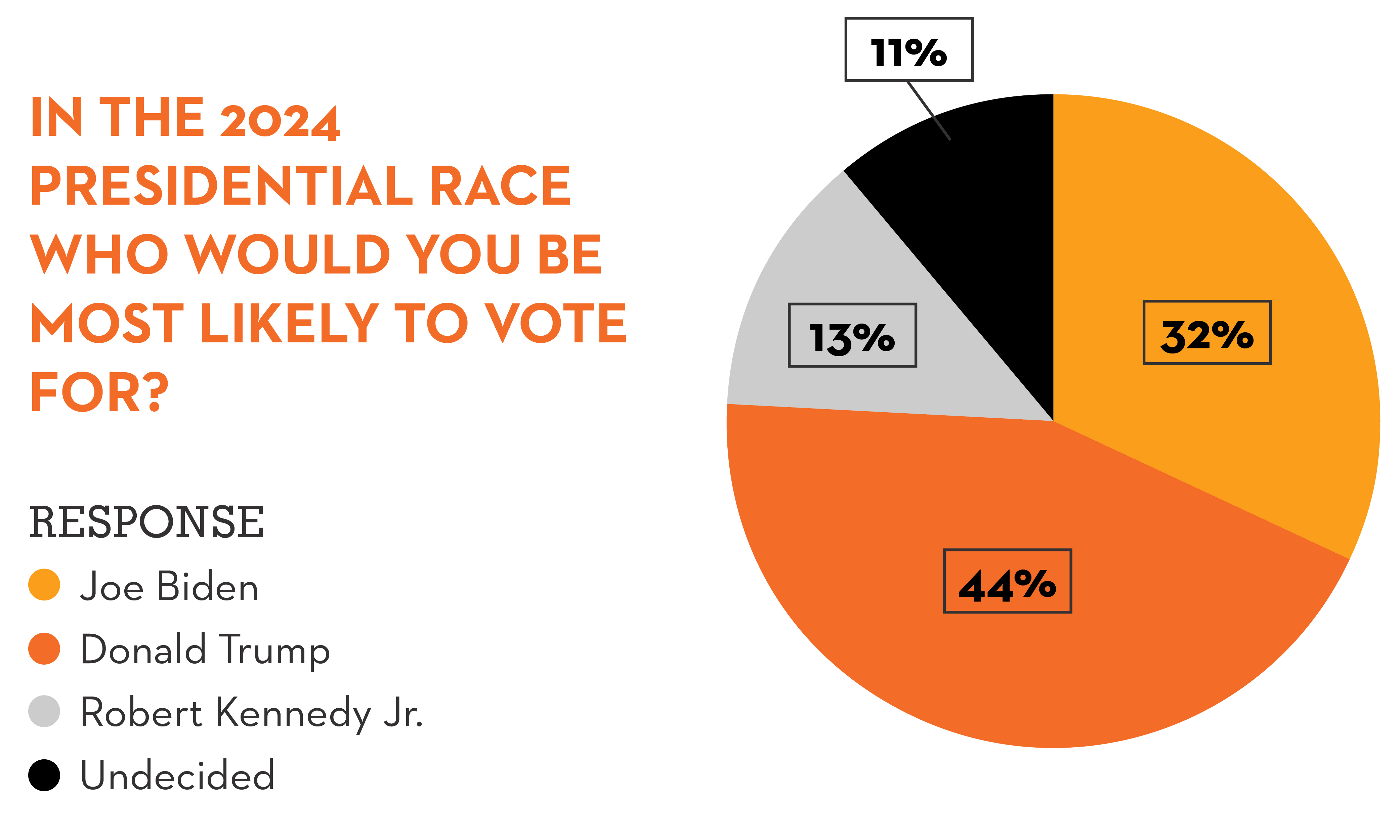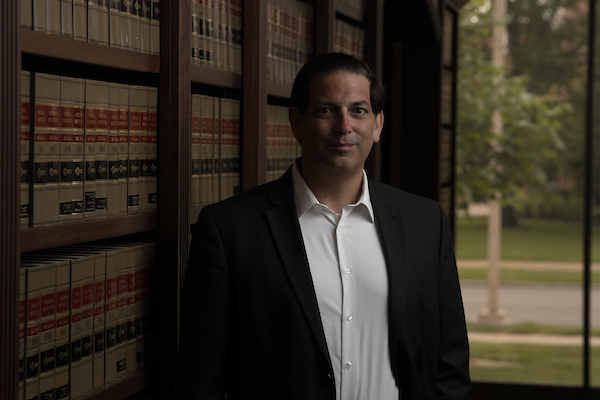March 2024
March ‘24 Northern Poll of likely Ohio voters shows: A tight race for the Republican Senate nomination and a close contest in the fall against Sherrod Brown, Trump still dominates Buckeye State, views on Trump legal woes fall on partisan lines, age is a bigger issue for Biden.
The Institute for Civics and Public Policy (ICAPP) at Ohio Northern University has released the March Northern Poll, a web-based poll of 1,241 likely Ohio voters conducted from 03/06/24 through 03/11/24. The poll has a margin of error +/- 3.3% and was done under the leadership of Dr. Robert Alexander, Ph.D., professor of political science and ICAPP director; and Dr. John Curiel, Ph.D., assistant professor of political science, in partnership with SurveyUSA.
Here’s what Alexander and Curiel say are the biggest takeaways:
Trump bump has helped Bernie Moreno, Matt Dolan is surging, and many Republicans are still undecided.
Bernie Moreno has enjoyed a steady rise in the polls since receiving the coveted endorsement of former President Donald Trump in December. Moreno (22%) holds a slight lead over State Senator Matt Dolan (18%) and Ohio Secretary of State Frank LaRose (16%), with a large number of likely Republican voters who are still undecided (44%). Notably, Dolan polls best among the three against Sherrod Brown in our hypothetical head-to-heads. The rise of Moreno and Dolan represents a major change as both were polling well behind LaRose for much of the past year. Dolan recently scored the endorsement of Governor Mike DeWine, who holds the highest net approval rating of any politician we polled. Many respondents are still unfamiliar with the candidates, making the final week’s push critical to the outcome of the race.
“The race to take on Sherrod Brown is still anyone’s guess, but Bernie Moreno and Matt Dolan have clearly gained momentum. Name recognition will be key and Trump’s pitch to Ohio voters this week in support of Moreno will be helpful to his chances.”--Robert Alexander, Ohio Northern University
Sherrod Brown is vulnerable but competitive in an increasingly red Ohio.
Sherrod Brown represents one of the few bright spots for Democrats in the state. He is well known and is among the few politicians that hold a positive favorability rating (+11). His potential opponents are largely unknown, with LaRose (-5) and Moreno (-7) holding negative favorability ratings, while Dolan has a net favorability of +1. A plurality of respondents favor Brown over all three of his potential Republican foes (44-36 vs. Frank LaRose, 43-37 vs. Bernie Moreno, and 42-39 vs. Matt Dolan). While there are some good signs for Brown, it is likely he will face his most difficult race yet for the Ohio Senate this fall.
"Ohioans are unhappy with much of what is going on in politics today and rate many political figures negatively. Sherrod Brown is a notable exception to this frustration and he will need to draw upon his personal brand if he is to win re-election this fall.” --Robert Alexander, Ohio Northern University
Ohio is not looking like much of a presidential swing state in 2024.
Donald Trump continues to poll strongly among likely voters, beating President Joe Biden 50-38 in a hypothetical matchup. The addition of Robert F. Kennedy Jr. appears to pull equally from both Trump and Biden resulting in a split of Trump 44%, Biden 32%, and Kennedy 13%. Likewise, we see very little difference when matching Trump up against other prominent Democrats including Kamala Harris, Gavin Newsom, and Gretchen Whitmer. In each case, Trump garners a majority of support among likely voters.
"After nearly a century as the nation’s bellwether, we see little to suggest that Ohio will be particularly competitive in the 2024 presidential election. It is worth noting, however, that while 50% of respondents would choose Donald Trump, 50% also hold a negative view of him. Joe Biden is simply viewed far less favorably by far more Ohioans.” --Robert Alexander, Ohio Northern University
Ohio likely voters are in favor of age limits for politicians but evaluate age differently between Biden and Trump.
Perceptions of age continue to impact the race, though almost certainly due to media coverage of the campaign to date. Where 72% of respondents note Biden’s age limits his performance, only 45% say the same of Trump despite the four-year age gap between them. In comparison, 56% of respondents noted that age limited the performance of Bernie Sanders, who is actually one year older than Biden. A strong majority of respondents support age limits for president (59%), senators (62%), house members (61%), supreme court members (62%), and governors (60%). A whopping 78% of respondents support mental competency tests for public officials over 75 years old that should be released to the public.
"There are few things Americans agree on these days, yet most believe that old age can be a problem for politicians and many support age restrictions for public office. The poll suggests age is a bigger issue for Biden than Trump.” --Robert Alexander, Ohio Northern University
Trump’s legal issues are largely viewed through partisan filters.
Respondents largely view the cases against Trump through a partisan lens. With over 85% of respondents hearing about the cases against Trump, Democrats lead the bulk of the popular support in believing the four cases are important, that Trump is being treated fairly, and that he should be convicted. The Democratic support ranges from 86-92% in belief of importance for the cases, 77-81% in being treated fairly, 78-86% that Trump should be convicted, and 57-71% in that Trump will be convicted. The difference between those who think he should be convicted versus those who believe he will be convicted is notable. The support for independents is nearly half that of Democrats across the board, varying by item. For example, Independents believe the importance of the cases range from 50-56%, with the most serious being the federal January 6th case. Independents likewise demonstrate a fairly uniform distribution in the belief that Trump is treated fairly across the cases. Even for the case perceived to be most serious, Independents report 41% in favor of conviction, with 39% against, and 22% uncertain. Republicans report slim majorities stating that the cases are not important, with a low of 50% for the Georgia case and a high of 64% for the hush-money case. Likewise, majorities of Republicans report that prosecutors fail to treat Trump fairly, with a low of 64% for the Georgia case and a high of 68% in the federal January 6th case. Super majorities of Republicans believe that Trump should not be convicted, ranging from 75-77%, and believe that Trump will be convicted ranges from 67-74%. Overall, Democrats are more likely to say that the cases will have a negative impact on Trump’s political career, with pluralities of Republicans and Independents expressing uncertainty as to the overall impact. Across the board, Democrats likewise seek urgency in the cases against Trump, with a range of 60-69% desiring the cases be heard before the election. Democrats exhibit greater urgency for the January 6th federal and documents cases. In turn, pluralities of Independents prefer the cases be heard before the election, ranging from 30-35%. Republicans seek to delay the cases, with pluralities ranging from 33-35%. Across the board, the second choice appears to be the judges’ discretion, regardless of party.
"Unsurprisingly, the litigation against Trump is highly contentious and solidified. There appears to be little room for Ohioans to learn anything new, and partisanship decides all. Despite the vast differences in the nature of the charges – and evidence – against Trump, there is next to no variance in beliefs on importance, fairness of treatment towards Trump, whether he should be convicted, will be convicted, or even the start date for the trial. No matter how the cases resolve, half of Ohioans – and likely the nation – will be furious.” --John Curiel, Ohio Northern University

